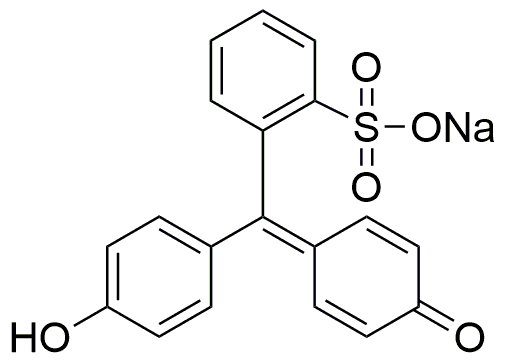Phenol red sodium salt is widely utilized in research focused on:
- pH Indicator: Commonly used in cell culture media to indicate pH changes, helping researchers maintain optimal conditions for cell growth.
- Medical Diagnostics: Employed in various diagnostic tests, including those for assessing liver function, due to its ability to change color with pH variations.
- Biochemical Research: Acts as a vital tool in studying enzyme activities and cellular processes, allowing scientists to monitor reactions in real-time.
- Pharmaceutical Development: Used in drug formulation to evaluate the stability of active ingredients under varying pH levels, ensuring efficacy and safety.
- Environmental Monitoring: Applied in assessing water quality, as it can indicate the acidity or alkalinity of water samples, which is crucial for environmental health studies.
General Information
Properties
Safety and Regulations
Applications
Phenol red sodium salt is widely utilized in research focused on:
- pH Indicator: Commonly used in cell culture media to indicate pH changes, helping researchers maintain optimal conditions for cell growth.
- Medical Diagnostics: Employed in various diagnostic tests, including those for assessing liver function, due to its ability to change color with pH variations.
- Biochemical Research: Acts as a vital tool in studying enzyme activities and cellular processes, allowing scientists to monitor reactions in real-time.
- Pharmaceutical Development: Used in drug formulation to evaluate the stability of active ingredients under varying pH levels, ensuring efficacy and safety.
- Environmental Monitoring: Applied in assessing water quality, as it can indicate the acidity or alkalinity of water samples, which is crucial for environmental health studies.
Documents
Safety Data Sheets (SDS)
The SDS provides comprehensive safety information on handling, storage, and disposal of the product.
Product Specification (PS)
The PS provides a comprehensive breakdown of the product’s properties, including chemical composition, physical state, purity, and storage requirements. It also details acceptable quality ranges and the product's intended applications.
Certificates of Analysis (COA)
Search for Certificates of Analysis (COA) by entering the products Lot Number. Lot and Batch Numbers can be found on a product’s label following the words ‘Lot’ or ‘Batch’.
*Catalog Number
*Lot Number
Certificates Of Origin (COO)
This COO confirms the country where the product was manufactured, and also details the materials and components used in it and whether it is derived from natural, synthetic, or other specific sources. This certificate may be required for customs, trade, and regulatory compliance.
*Catalog Number
*Lot Number
Safety Data Sheets (SDS)
The SDS provides comprehensive safety information on handling, storage, and disposal of the product.
DownloadProduct Specification (PS)
The PS provides a comprehensive breakdown of the product’s properties, including chemical composition, physical state, purity, and storage requirements. It also details acceptable quality ranges and the product's intended applications.
DownloadCertificates of Analysis (COA)
Search for Certificates of Analysis (COA) by entering the products Lot Number. Lot and Batch Numbers can be found on a product’s label following the words ‘Lot’ or ‘Batch’.
*Catalog Number
*Lot Number
Certificates Of Origin (COO)
This COO confirms the country where the product was manufactured, and also details the materials and components used in it and whether it is derived from natural, synthetic, or other specific sources. This certificate may be required for customs, trade, and regulatory compliance.


